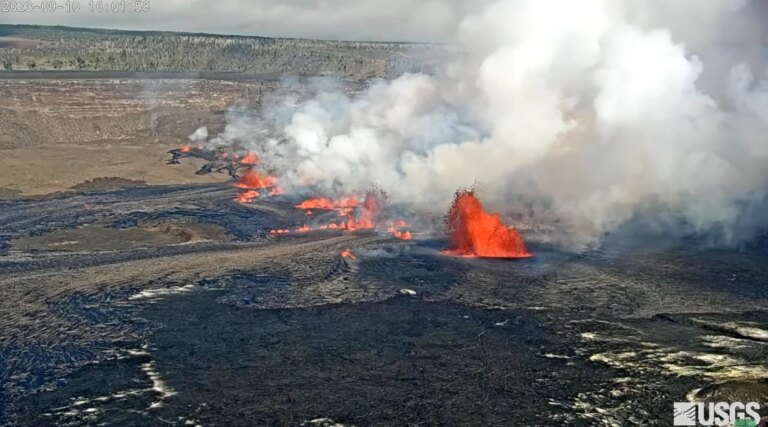Hawaii’s Kilauea Volcano Erupts: Air Quality Concerns
The latest eruption of Hawaii’s Kilauea volcano may not be causing infrastructure troubles, but it’s ringing alarm bells about air quality hazards. Health officials are cautioning the public about something called “vog,” which is volcanic smog.
Eruption Alert and Downgrade
Kilauea, known as one of the world’s most active volcanoes, started erupting this past Sunday. Scientists, however, downgraded the alert level on Monday, assuring there’s no significant ash emission outside a limited area within Hawaii’s Volcanoes National Park.
Vog on the Horizon
Later on Monday, state health officials reported that the eruption had brought vog to certain parts of the Big Island, resulting in poor air quality.
Understanding Vog
So, what exactly is vog? Vog, short for volcanic smog, is a kind of air pollution. It forms when vapor, carbon dioxide, and sulfur dioxide gases are released from Kilauea. These gases are most concentrated near the summit crater and vents. However, they can combine with other particles to create vog, which can drift across the Big Island and even reach other Hawaiian islands.
Health Effects
Vog isn’t friendly to your health. It can cause burning eyes, headaches, and sore throats in healthy individuals. For those with asthma or other respiratory problems, vog can be even more serious, potentially leading to hospital visits.
Air Quality Concerns
The health department’s air quality map has already flagged Pahala, situated downwind from Kilauea’s summit, as “unhealthy for sensitive groups.”
Mayor’s Reminder
Mitch Roth, the Mayor of the Big Island, mentioned that residents in certain areas are accustomed to dealing with vog. However, he advised visitors, especially those with respiratory issues, to stay cautious. Vog often finds its way around the island and may affect regions like Kona.
Stay safe and mindful of air quality, especially if you’re on the Big Island of Hawaii.

